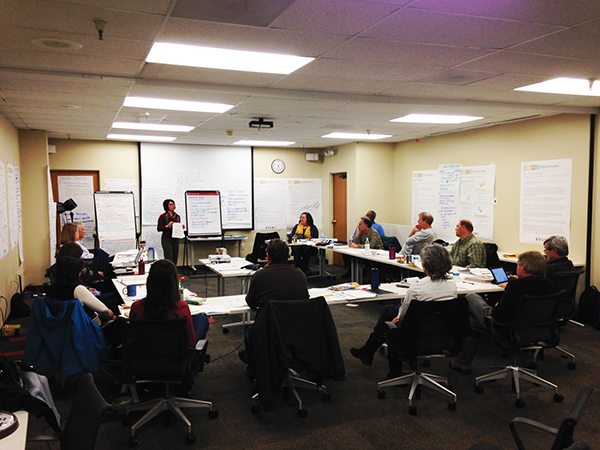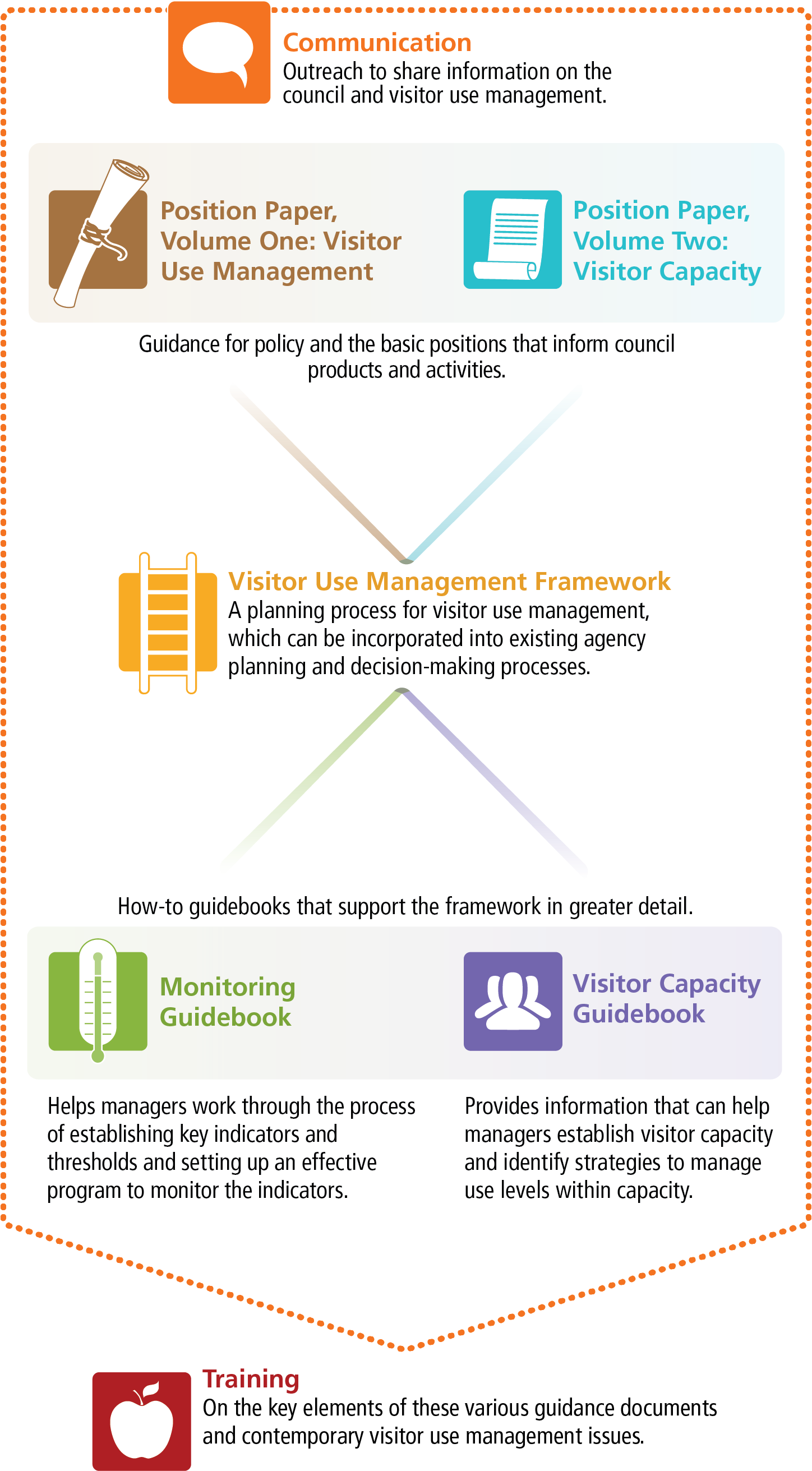About Us
Who We Are
The Interagency Visitor Use Management Council (council) consists of representatives from each agency:
- Bureau of Land Management, U.S. Department of the Interior
- Forest Service, U.S. Department of Agriculture
- National Oceanic and Atmospheric Administration, U.S. Department of Commerce
- National Park Service, U.S. Department of the Interior
- U.S. Army Corps of Engineers, U.S. Department of Defense
- U.S. Fish and Wildlife Service, U.S. Department of the Interior
Technical advisors from the six agencies - as well as from the U.S. Geologic Survey, U.S. Department of the Interior - also contribute to the activities of the council. Council Charter
Council Mission
The council’s mission is to provide guidance on visitor use management policies and to develop legally defensible and effective interagency implementation tools for visitor use management.
Council Purpose
The council’s primary purpose is to:
- Develop interagency guidance for effective visitor use management programs that are efficient and legally defensible.
- Identify strategies for improving institutional capabilities and professional competencies, including partnerships.
- Develop shared tools and training, including a unified visitor use planning framework, and monitor their effectiveness.
- Improve internal and external communication strategies.
The Work of the Council
The council has a robust work plan of products and services, six of which are:
- Visitor Use Management on Federally Managed Lands and Waters: A Position Paper to Guide Policy defines visitor use management and visitor capacity, clarifies how these two concepts interrelate, and outlines how these concepts should be used by managers of federal lands and waters to meet agency goals.
- Visitor Capacity on Federally Managed Lands and Waters: A Position Paper to Guide Policy documents the council’s position on and recommendations for addressing visitor capacity, including the legal requirements found in the Wild and Scenic Rivers Act, the National Trails System Act, and the National Parks and Recreation Act.
- The Visitor Use Management Framework provides an analytical process for making decisions about visitor use management, and if necessary, establishing visitor capacity, as part of an agency’s existing planning processes.
- The Monitoring Guidebook, in combination with the council’s Visitor Use Management Framework, provides specific guidance for developing a monitoring strategy related to visitor use that can be incorporated into existing agency planning and decision-making processes, along with day-to-day management.
- A Visitor Capacity Guidebook builds off the Visitor Use Management Framework and provides managers with processes and tools to collaboratively develop long-term strategies to manage the amounts and types of visitor use to achieve desired conditions.
- Training will be developed in the future.
Why the Interagency Visitor Use Management Council was Formed
The Bureau of Land Management, Forest Service, National Oceanic and Atmospheric Administration, National Park Service, U.S. Army Corps of Engineers, and U.S. Fish and Wildlife Service (collectively, these federal agencies) strive to maximize benefits for visitors while achieving and maintaining desired resource conditions and visitor experiences. Recent public initiatives, such as America’s Great Outdoors and Healthy Parks Healthy People US, demonstrate a commitment to enhance the public’s connection with the outdoors for purposes of recreation, spiritual renewal, improved health, and high-quality time spent with families and friends. Providing and managing for these opportunities is fundamental to the stewardship missions of these federal agencies. At the same time, these agencies are challenged to strike an appropriate balance between these societal benefits and resource protection and conservation. Managing visitor access and use for recreational benefits and resource protection is inherently complex.
During the past three decades, these federal agencies have gained substantial experience in meeting these often competing objectives, but challenges remain. Managers continue to struggle with uncertainty about the best approach to balancing visitor use and access consistent with the agencies’ mandates to protect natural and cultural resources. This uncertainty is exacerbated by inconsistent use of terminology and divergent approaches to managing visitors and recreation on federal lands and waters. It is not uncommon for more than one agency to manage different sections of a wild and scenic river or national trail and this is where lack of a consistent approach can lead to miscommunication and more complex management issues, which have a direct effect on the public.
Leaders of these federal agencies chartered the Interagency Visitor Use Management Council (the council) to enhance best practices, interagency consistency, cost-effectiveness, and the defensibility of decisions related to visitor use management. The council has been given the task of developing consistent interagency guidance for visitor use management, including visitor capacity. It is important to reduce redundancy of effort and increase consistency in the interpretation and application of laws and policies pertaining to visitor use management on federal lands and waters.
An interagency council allows the agencies to leverage resources, minimize redundancy in efforts, and greatly increase efficiencies in addressing the on-going needs of visitor use management in all six agencies. New innovations will be continually tested and adapted, and through interagency coordination and leveraging of resources, there will be on-going improvements to best practices.











